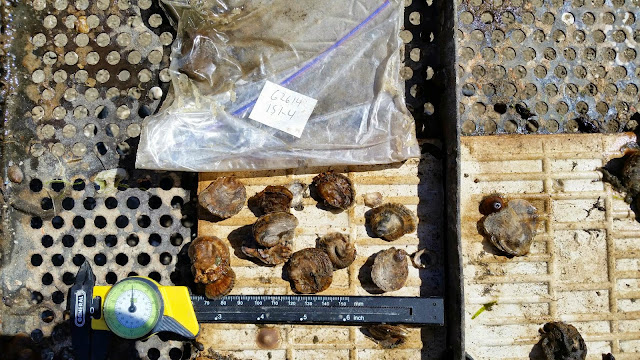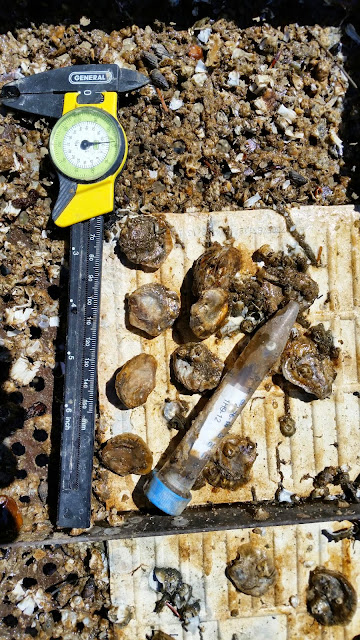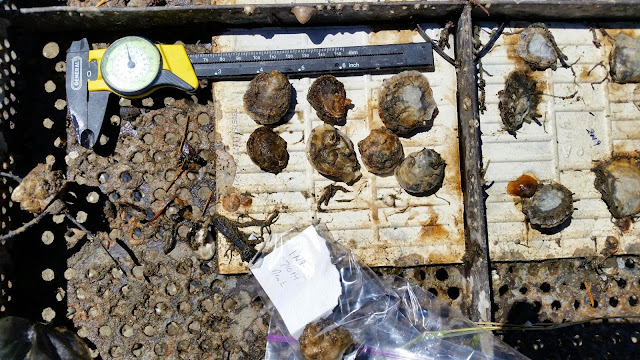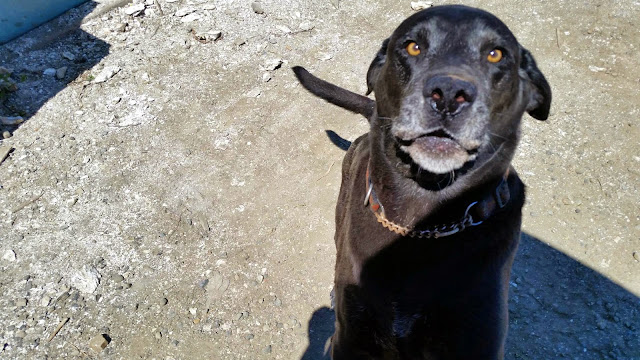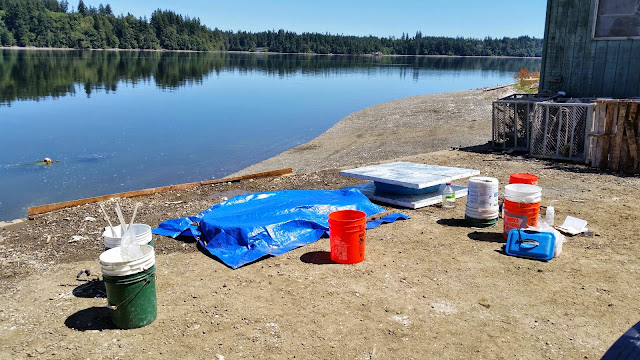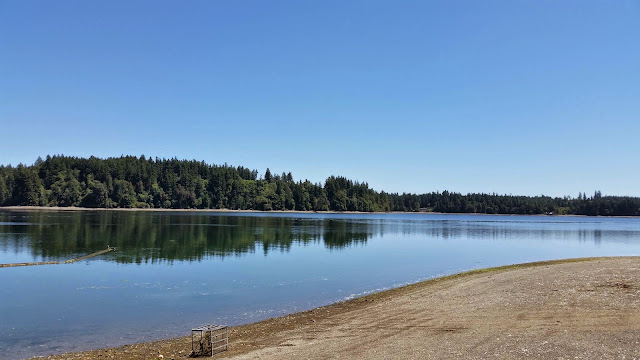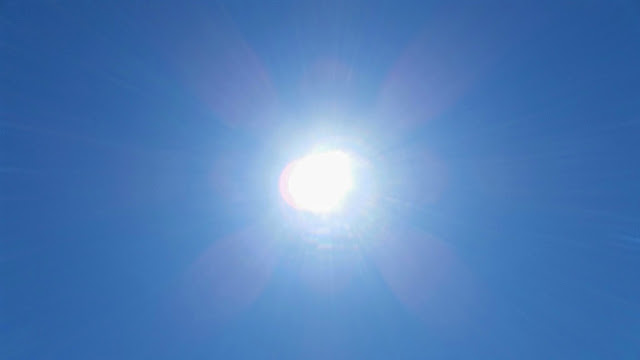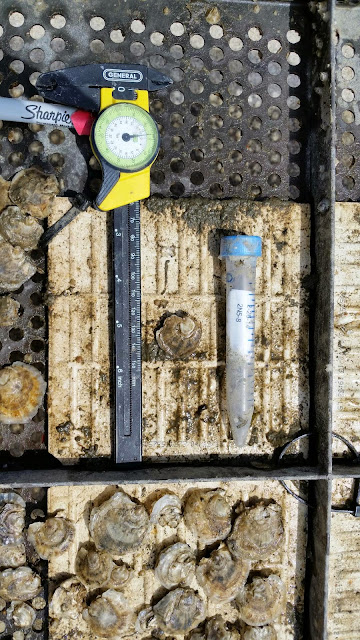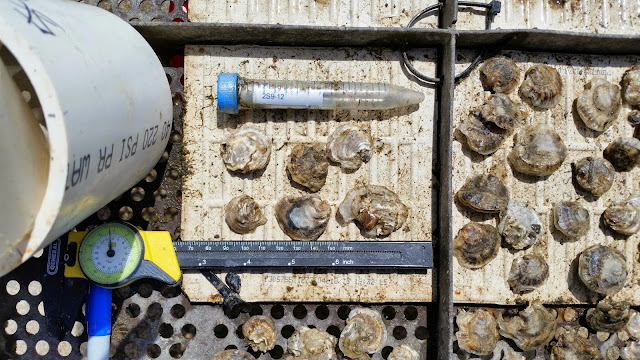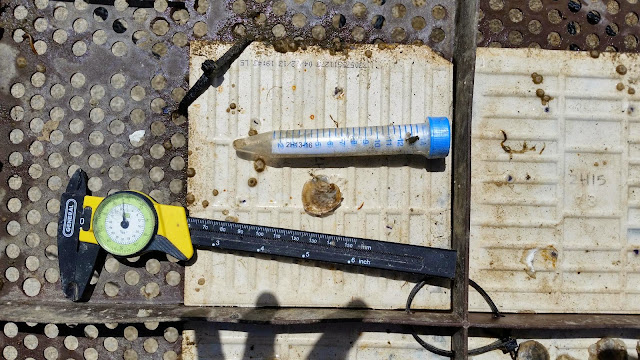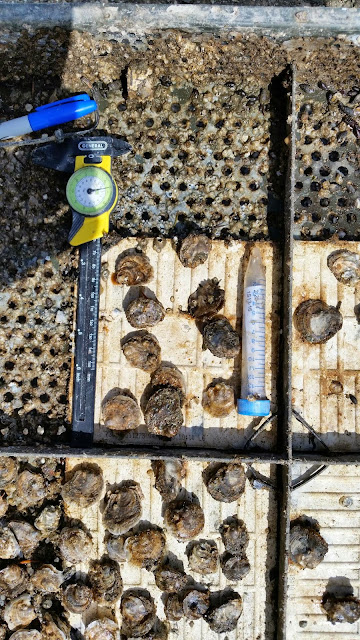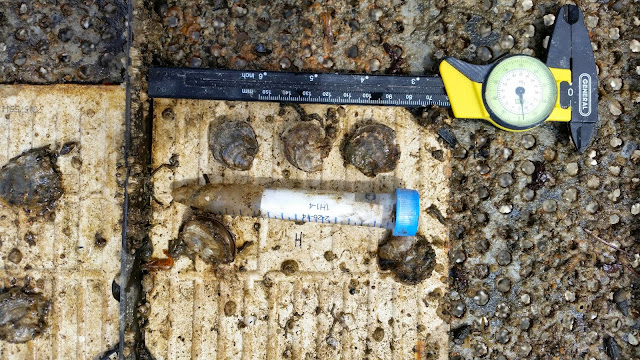Klamiche shores, wa
Hi 60s to low 80s
Performed the anesthesia sop with insulation and ice blocks on treat. I also covered the Pretreatment and recovery tubs with a tarp to shade them from direct sun to help moderate the water temps. It worked well along with adding fresh seawater and leftover ice blocks, keeping the trays within 3 degrees of ambient. Also I broke the one day record for number of brooders. All pops had multiple brooders with the northern pop almost being equal to the southern pop in terms of numbers. Dabob pop also performed very well. I think this has to do with last week's neap tide and the much warmer than average air temps.
Numbers as follow.
Temps in c
Pretreatment
Initial. 16
45. 16
1.5. 16
Treatment
Initial. 14
45. 14
1.5. 13
2.25. 12
Recovery
Initial. 16
45. 17
1.5. 17
Salinity in ppt
Pretreatment. 25
Treatment. 65
Recovery. 24
Brood collection
1N9-12
Brood. 8
Gaping. 73
Dead. 3
Closed. 2
Brooders
# size. Sick
1. 30. W
2. 22. W no sample, very few larvae
3. 39. W
4. 35. W
5. 31. W
6. 33. W
7. 28. W
8. 32. W no sample tile oyster
1H9-12
Brood. 6
Gaping. 83
Dead. 3
Closed. 3
Brooders
# size. Sick
1. 27. W
2. 27. W.
3. 28. W
4. 26. W
5. 26. W
6. 27. W
1S1-4
Brood. 10
Gaping. 82
Dead. 0
Closed. 1
Brooders
# size. Sick
1. 22. W
2. 22. W
3. 25. W
4. 28. W
5. 27. W
6. 27. W
7. 25. W
8. 24. W
9. 30. W
10. 30. W. No sample, tile oyster
